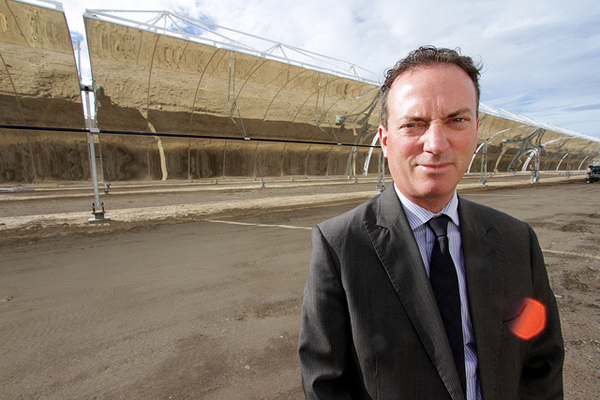Chantelle was 28 years old when she found herself homeless for the first time in her life. Escaping an abusive relationship, she was living in a cardboard box, and sometimes in a garbage dumpster, in Calgary.
She was homeless for a couple of months, she said, with untreated mental health issues mounting, until the Calgary police found her living in a dangerous situation, determined she was at risk — and placed her in detox.
“I didn’t have a drinking or drug problem,” Chantelle said, “but I needed that supervision.” Concern for her mental stability gave the intervention team reason to worry “whether I was going to hurt myself, whether I was going to do something I [would] regret,” she said.
She didn’t know at the time that the Calgary police was part of a larger response to homeless in the city. Blandly named the System Planning Framework (and known as the “System of Care” to the people delivering it), it’s a network of service providers that try to connect people on the street with a home as swiftly as possible, then plug them into other help to deal with other issues — like Chantelle’s psychological ones — so that they don’t return to homelessness.
Another member of the network, Calgary’s Alpha House, which offers help with shelter for people with mental and drug issues, took Chantelle in. It has supported her for the five years since, she said.
Her recovery has taken longer than the normal one-year term of the program Alpha House provided. Happily for Chantelle, “They won’t kick you out in the set time. If you need extra support, then they’ll keep providing that support.”
And Chantelle admits she needed it. When she first came to Alpha House, “it was a little jarring.” At the time, she didn’t know how to cook, clean, shop. “I didn’t know how to do anything. And then here I find myself being thrown into an apartment and I’m responsible for the upkeep of it.”
But the system of wrap-around care services “also taught me the independence that I have now,” she said. “Alpha House has always stepped in, they’ve always gone above and beyond,” to keep a roof over her head or personal contact with a caseworker.
A Harper initiative
Putting housing first, then “wrapping” people in other services, isn’t a new idea. The Conservative government led by prime minister and former Calgary MP Stephen Harper placed it at the centre of its homelessness response. In places like Medicine Hat, Alberta and Salt Lake City, Utah, where it’s been thoroughly applied, it has been credited with sharply reducing and even nearly eliminating chronic homelessness.
BC Housing has supported the concept in British Columbia for the last decade, in principle. But the wrap-around services required to make it work — addiction recovery, mental health support, enough caseworkers to help everyone individually — have been difficult to co-ordinate.
Chantelle was one of the first people that Alpha House helped accommodate after it adopted the “Housing First” idea of shelter as the top priority for clients in 2008.
“It makes engaging with clients much easier,” said Samantha Hung, the agency’s interim housing manager. When Alpha House loses touch with a client, its staff can appeal through the broader network of service providers to reconnect. That’s particularly true when they’re working with people who are engaged with several agencies at once, such as emergency resources and jail.
“We focus on those individuals because they’re costing the system the most money,” Hung said.
She offers the example of a client who used emergency resources extensively but had been barred from many Calgary shelters. The First Nations woman, a double amputee stuck in a wheelchair with chronic pain, had mental health and drug issues. When she appeared on Alpha House’s radar, they were able to place her in detox. She stayed there seven months, the longest stay in its history. But thanks to being plugged into the network, Hung said, the facility was “able to be more lenient with her.”
That client has been in Alpha House’s shelter program for four years now, and sober for two-and-a-half. “I think with her case especially, going from one of the city’s highest users to being clean for two-and-a-half years, that system of care was really key in us being able to work around her as a whole agency versus program by program,” Hung said.
Services must work together
According to the Calgary Homeless Foundation, the regional system connects struggling individuals to a variety of available social services, using different models and emphasizing different aspects of getting back on their feet.
Some help people keep any accommodation they’ve already got. Others reach out to those already on the street. The network also includes emergency shelters, permanent housing and harm reduction centres.
“These are critical [services] that have to be working together, and willing to work together, in order to make a difference here,” said Kevin McNichol, the Calgary Homeless Foundation’s vice-president of strategy.
McNichol estimates that services in the city have housed 8,500 people using the model since 2008 — with a 90 per cent success rate of keeping a permanent roof over someone’s head. Two thousand people are currently actively housed and still using services. Every year, 15 per cent of those 2,000 move on from accessing services.
While McNichol estimates that solving Calgary’s chronic homeless crisis would take another $405 million for services and housing, he said the city’s care system helps agencies push for that kind of investment with a united voice.
“What [it] can help you do,” he said, “is organize yourself as a community.”
Calgary’s care system evolved, Calgary councillor Brian Pincott said, when “some failures” became apparent in the pure Housing First model. “Without any of the wrap-around supports, we weren’t seeing the successes for individuals that we should have been seeing.”
“While Housing First is a really important approach to dealing with homelessness,” Pincott said, Calgary soon concluded that “it can never be housing only.”
Indeed, a two-year study by researchers at Simon Fraser University seems to confirm the point. The scientists monitored the substance use of nearly 500 individuals sorted into two groups. One received independent housing with support services — the Housing First model — and the other just regular treatment. The results showed that housing alone did not reduce drug abuse without more focused addiction treatment.
And even with wrap-around help, Calgary still has a homelessness problem. Pincott blames that in part on the system of care not being fully implemented. “There are issues of capacity within agencies that are already stretched to the absolute limit,” he noted. “It’s part of the challenge.”
It costs $100 million “to keep the existing doors open” on 10,000 affordable housing units in the Calgary region, Pincott said. All three levels of government seem to be on the same page about adding more resources, he adds. “We just need the money to start flowing.”
The key to success, said Tim Richter, president and CEO of the Canadian Alliance to End Homelessness, is directing funding to “where the money is best spent.”
“Fifteen, 17 per cent of the people who experience homelessness take up 60 per cent of the emergency shelters,” Richter argues. If “the objective is to reduce homelessness, you want to target [funds] to the smaller number of people with the greater amount of needs who are taking up most of the space in the homeless system.”
Medicine Hat still has homeless
Two-hundred and sixty kilometres southeast from Calgary down the Trans-Canada Highway is the town of Medicine Hat. It’s put itself on the map by claiming to have dealt with street homelessness using the same combination of housing and wrap-around services as Calgary.
Mayor Ted Clugston calls himself “the poster child” for “someone who came onboard,” after harbouring initial skepticism about the approach.
But it’s wrong to say his city has permanently or completely solved homelessness, Clugston said. Instead, it’s in “maintenance mode.”
“You never solve the homelessness problem,” Medicine Hat’s mayor concedes. “You manage it. It never just goes away. For some people it’s chronic. And you have to deal with it.”
Still, with 11 different service and housing resources offered from a single intake point on a first-come, first-served basis, Clugston said the city can generally house the homeless within 10 days of their first coming to agencies’ attention.
It also saves money by doing so. According to the Medicine Hat Community Housing Society, it costs $134,000 a year on average for the city’s emergency services to interact with a homeless person, but only $34,000 for supportive housing.
But successes like Calgary’s and Medicine Hat’s obscure some systematic weak points in the formula of housing-plus-wraparound-care.
For one thing, the model is mostly designed for adults, even though a national survey of 1,103 Canadian youth receiving support services released this year found that 40 per cent had became homeless before they turned 16.
A report based on the survey notes that homeless youth face bigger problems down the road, yet some jurisdictions wait until they are 16 or 18, and in crisis, to offer services.
Youth “need different arrangements,” said Stephen Gaetz, director of the Canadian Observatory on Homelessness, who also co-authored the report. “The current approach is not working. We need to get creative and come up with better solutions for them.”

His report calls for prevention-focused methods, Housing First for youth specifically, and transitional support for youth aging out of foster or government care.
Instead, Gaetz complains that when the federal government renewed its commitment to an adult Housing First strategy in 2013, it diverted money for the purpose away from other existing programs, many aimed at youth.
In BC, a will, but scant resources
With both successes and limits apparent in next-door Alberta, Simon Fraser gerontology researchers teamed up with the Greater Vancouver Shelter Strategy to map services available in the B.C. Lower Mainland to provide Housing First clients with those “wrap-around” supports.
After holding 13 listening sessions across the region between March and June 2016, GVSS’ Rebecca Bell said that, “What we’ve been hearing from communities was [that] there aren’t enough resources available to support Housing First service delivery.”
Nor are “wrap-around” resources equally available everywhere in the region. Although some communities reported that they have many and varied services, wait-lists are a lingering problem in most.
“You’re saying we’re trying to provide immediate access to housing, and then it’s taking people six months to actually obtain a support service,” Bell said. “That’s a long time to ask someone to figure out how to maintain housing if they don’t have the wrap-around support.”
Accessing and navigating those limited available services becomes more difficult when case workers are dealing with twice or four times normal case loads, Bell adds.
The exact extent of the service shortage is unclear. “At present,” the research team wrote in a report, “there is no documentation to describe resource differences between and within communities in Metro Vancouver.”
And a consistent theme in the groups’ consultation was the B.C. Lower Mainland’s general lack of affordable housing.
The provincial housing agency, BC Housing, claims that it “has adopted a Housing First approach to homelessness for more than a decade.” It provided about $204 million this past year to support more than 14,000 permanent year-round shelter spaces and subsidized rental units.
But nearly as many households — more than 10,000 individuals and families — are wait-listed for assisted housing, while the number of homeless continues to trend up in the Metro Vancouver region.
Alberta’s experience demonstrates that Housing First — and wrap-around services soon after — can minimize the ongoing suffering of homelessness. But with neither enough places to house all those in need, nor services to wrap around them, British Columbia clearly can’t expect to enjoy the same success. ![]()
Read more: Housing

















Tyee Commenting Guidelines
Comments that violate guidelines risk being deleted, and violations may result in a temporary or permanent user ban. Maintain the spirit of good conversation to stay in the discussion.
*Please note The Tyee is not a forum for spreading misinformation about COVID-19, denying its existence or minimizing its risk to public health.
Do:
Do not: